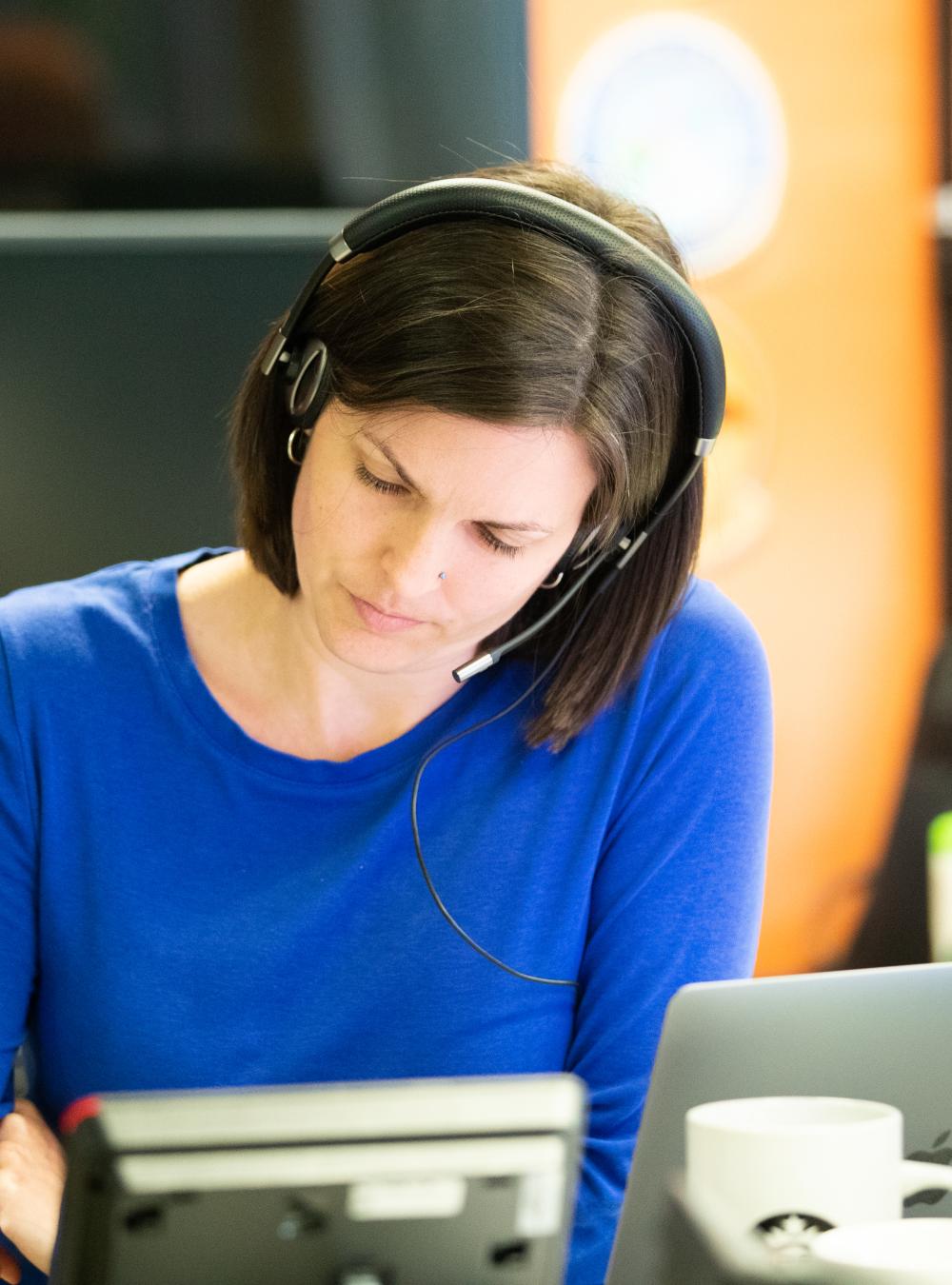To enable our employees do their best work and reach their greatest potential, we’ve developed an enterprise computing infrastructure with options in equipment and connectivity tools. This flexibility—and choice—has been embraced by our 8,200+ employees.

Device Choice Empowers MITRE People to Innovate in Their Own Way
Enabling the enterprise. Working smarter. Maintaining infrastructure security. In a year where remote work became standard for many organizations, these terms took on a new level of priority. At MITRE, there’s another element to the equation—empowerment through choice.
“We give employees the flexibility to choose their hardware—Windows or Macs,” says Pat Nanartowich, who leads MITRE’s Enterprise and Mobile Solutions team. “We currently have 9,000 Windows and 2,000 Macs in our managed systems.”
Also, as of last year, staff can request a cell phone. Over 7,000 staff have chosen to receive one.
Despite the disruption of the pandemic, our connectivity and productivity have reached new heights, enabling seamless operations as we embraced remote work.
“Our priority is to ensure all of us have the tools we need to do our job, wherever we are,” Nanartowich says.
Adapting as Needs Change
Isn’t this kind of device flexibility the norm?
Actually, in an environment like ours—where we’re trusted with securing government information and the proprietary data of other organizations—maintaining parallel but connected computer backbones is anything but the norm.
It’s not a decision we made lightly. But it’s worth the effort.
Twenty years ago, after analyzing costs, usage, and security, we moved to a homogeneous device environment and transitioned our primary user machines to a Windows environment.
At that time, maintaining the security, user programs, and functionality for both Windows and Mac systems was expensive and time consuming. Establishing a dual-security infrastructure was problematic, and few projects required Macs.
What’s changed since then? Quite a bit.
The primary drivers of the change were new and evolving needs from our government sponsors requiring Macs for certain projects. In response, we developed a new standard security configuration to accommodate these systems. Eventually, the proliferation of web-based programs and cloud-based applications made the systems even easier to use, regardless of the device.
Over time, we seamlessly integrated Macs into the corporate infrastructure. We now have a secure, heterogeneous device environment with equal access for whichever operating system employees prefer.
Different Systems, Equal Experiences
“Without question, our staff appreciates having a choice,” Nanartowich says. “We’re currently running at about a 60/40 Windows to Mac ratio of new system requests. From the user’s perspective, products and programs look and feel the same.”
And if your project work changes and requires a different system, the enterprise computing team will get you the equipment you need.
This flexibility in machines enhances productivity as well. We’ve found that some staff are far more comfortable—and creative—on one system over another. Having a choice of machine can also be a factor for candidates considering a career with us.
When we switched to primarily remote work in March 2020, the well-established choice program continued without a hitch. “We contacted new hires well before their start date, had them pick their device, and shipped it out so that they were ready to go on their first day,” Nanartowich says.
It’s not always easy to provide options and contain costs, but we’re committed to providing a compelling and collaborative work environment that can adapt to changing needs. That allows our people to concentrate on doing what they do best—solving problems for a safer world—wherever they are.